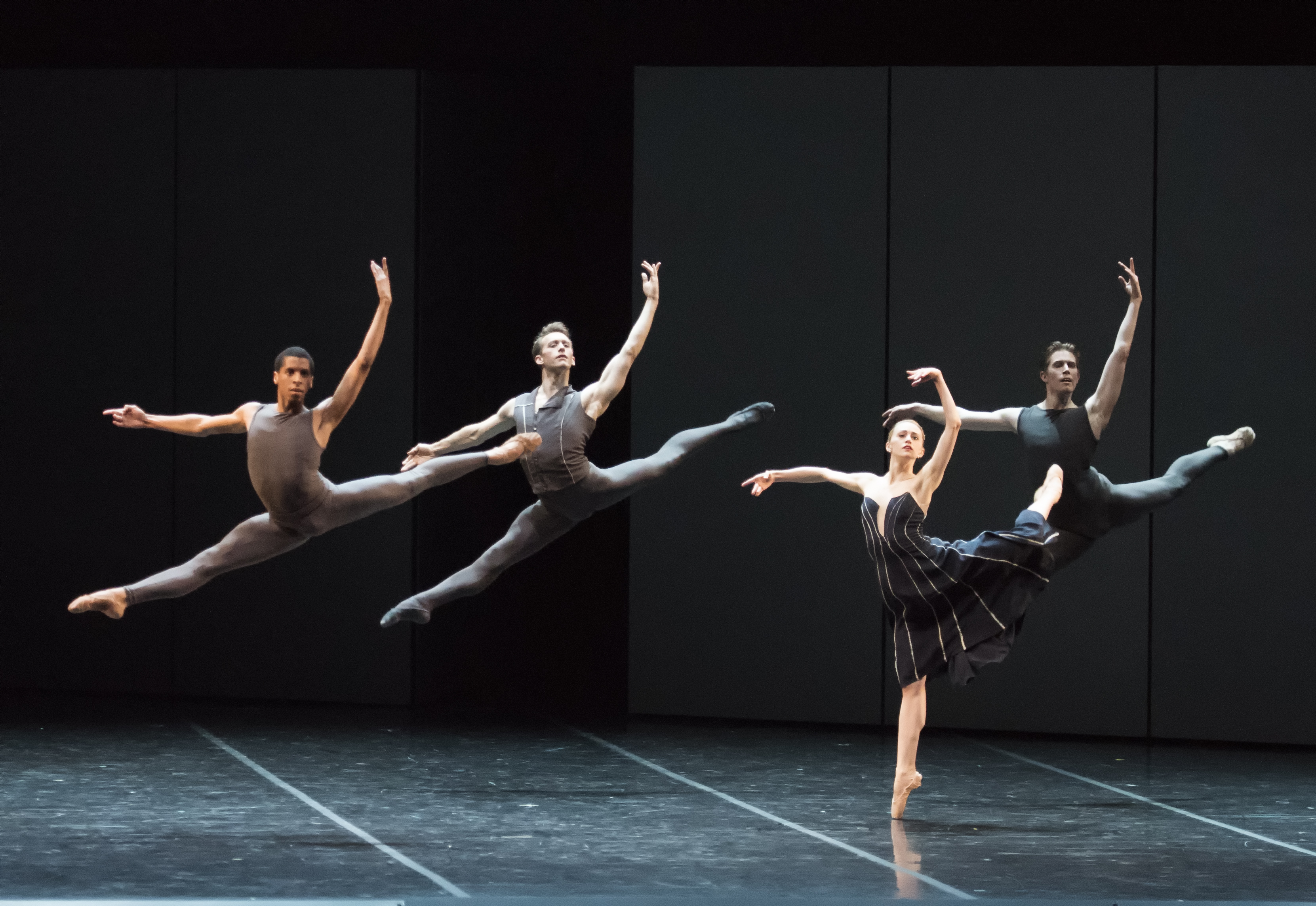A Resonating Season Finale: Review of Boston Ballet’s 'Mirrors'
Elizabith Costey ‘16/ Emertainment Monthly Staff Writer

The pianist enters. The audience applauds. “Resonance” by José Martinez begins. The stage is silent as a lone ballerina walks steadily into view. Large gray walls line the back of the stage. The ballerina takes up her choreography the instant the pianist begins to play. Choreographically, “Resonance” intertwines classical and contemporary dance styles, seamlessly creating a ballet that is both traditional and new. The staging is bold and constantly changing courtesy of the choreography, lighting, and award winning, movable set. At moments the stage is covered in as many as 19 dancers all performing difference pieces of choreography. At other times the stage is quiet and hosts a single soloist or duet. “Resonance” is a rush of movement and energy. It is a beautiful balance of shadow and light, movement and stillness. Like a puzzle, every element of the ballet fit flawlessly together. The set, the choreography, the music, the costuming, lighting- piece by piece wove into an exceptional ballet, certainly one of Boston Ballet’s best.
The audience, not to mention the dancers, catch their breath during a brief intermission before the next pieces begin. A soft rumble resounds throughout the theater. Spotlighting highlights dancers Anaïs Chalendard and Patrick Yocum as they lay together on the stage. “Belong”, choreographed by Norbert Vesak, is a tender and moving pas de deux, danced to the enigmatic melody of “December Angel” by Syrinx. As the music gains momentum, the pair curls around each other and begins to dance. The pas de deux is achingly beautiful. Chalendard and Yocum awe audiences with both their technical skill and emotional depth. The pair’s partnering is uncanny. When one moves, the other instantly reacts. The dancers are in perfect harmony. Yocum lifts Chalendard over and over as if she were nothing but air, while Chalendard’s gorgeous extensions and strength make the lifts appear natural and easy. In one instance Yocum balances Chalendard on his back as he stands in a low arabesque and then descends to the floor. In another scene Yocum carries Chalendard across the stage as she executes a perfect center split in mid air. Though brief, “Belong” was yet another incredible performance.

Only one final ballet remained for Boston Ballet’s performance of Mirrors; “Bitches Brew” choreographed by Karole Armitage. Anyone who knows Miles Davis’ music will recognize the title to his famous studio album released in 1970. And, anyone not familiar with the groundbreaking album can at least guess from the title, “Bitches Brew”, that this performance definitely won’t be a typical ballet. Karole Armitage created the ultimate modern, jazz, ballet hybrid, with unheard of costume choices and unheard of ballet choreography. But, Miles Davis’ “Bitches Brew” was an ‘unheard of’ jazz phenomenon. From concept to music and choreography, it all meshes together shockingly well. (And it is shocking.) Armitage’s choreography is challenging, sharp, playful, and present. It’s everything Boston Ballet has aspired to be, and it is the perfect season finale.
Boston Ballet has presented many impressive performances this season, but Mirrors is easily its best yet. Ranging from tender to tribal, Mirrors is unbeatable.